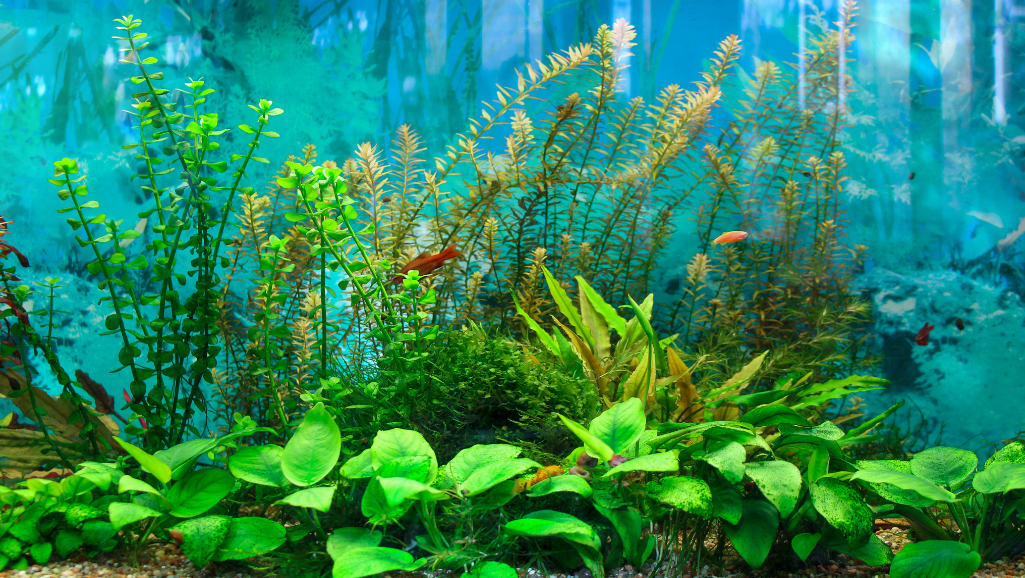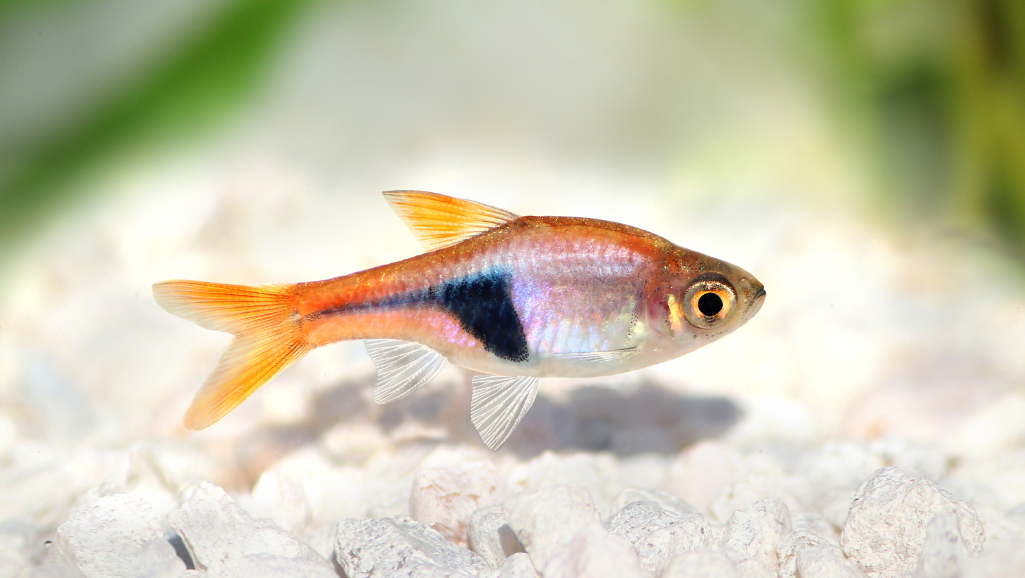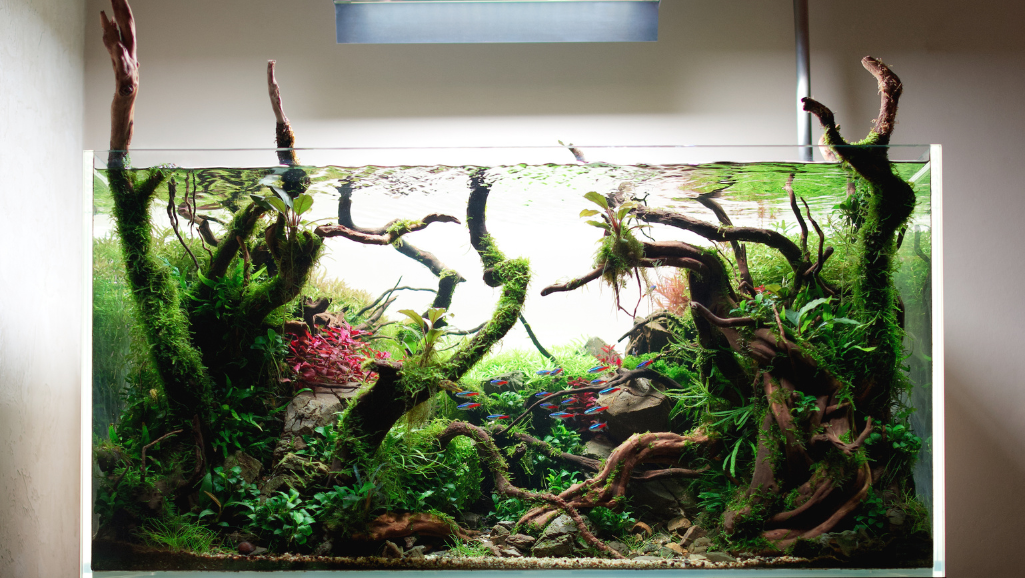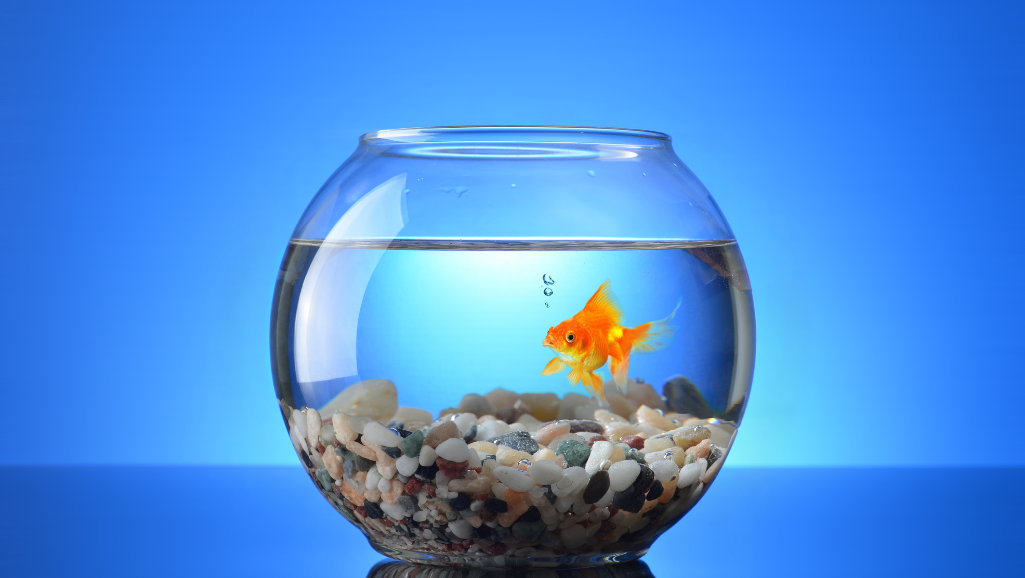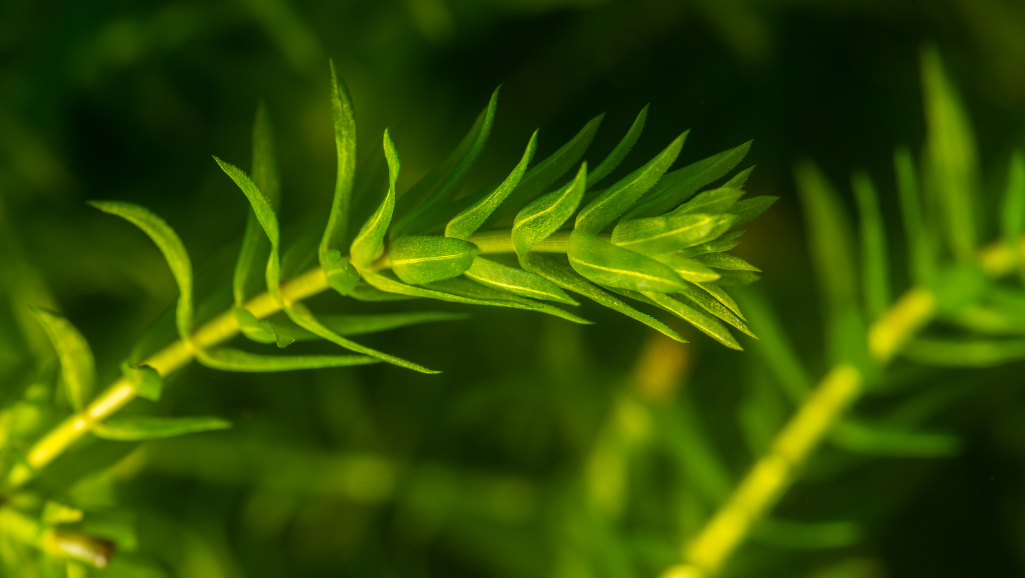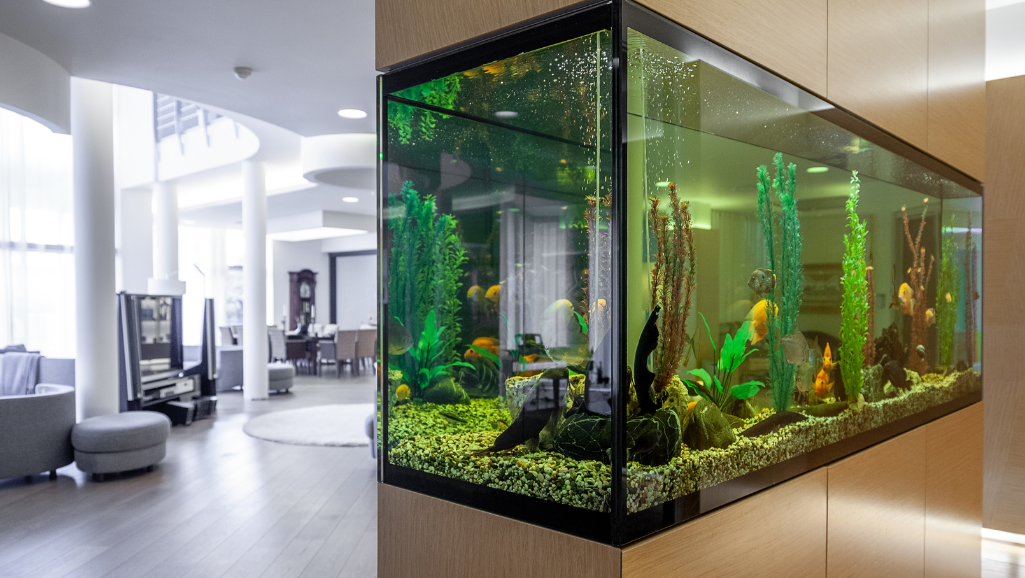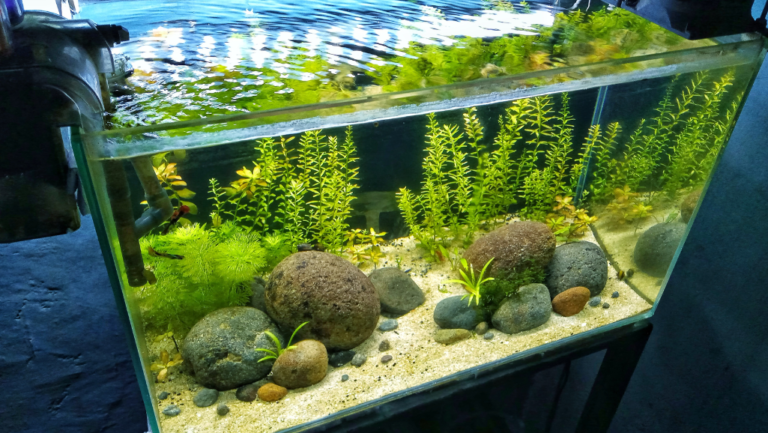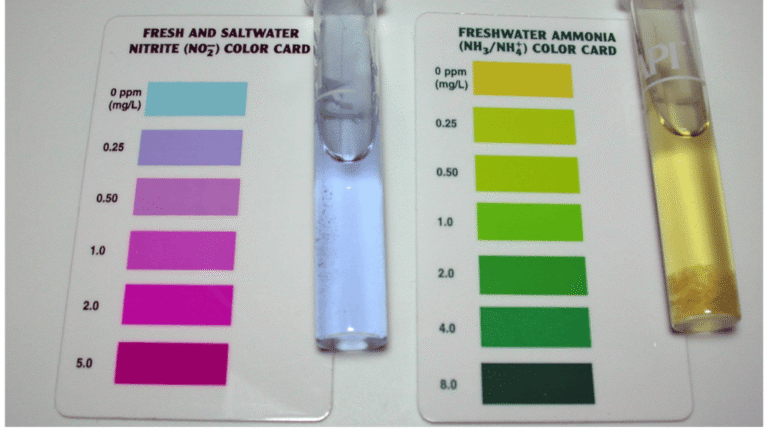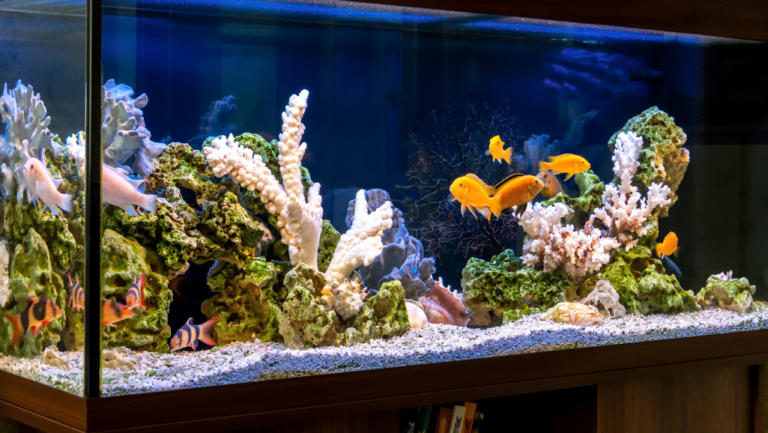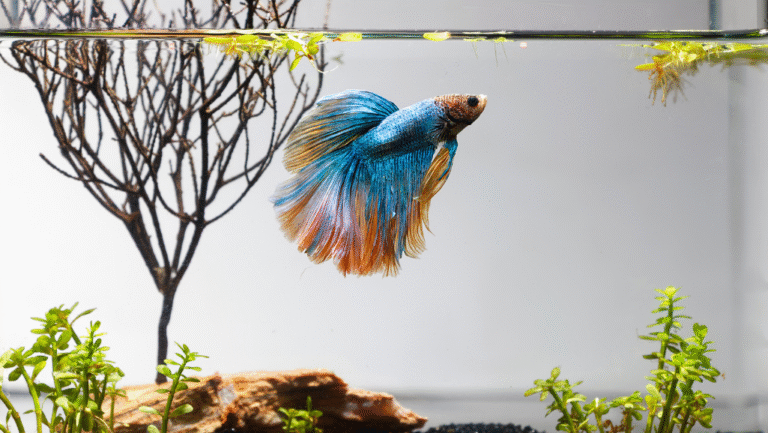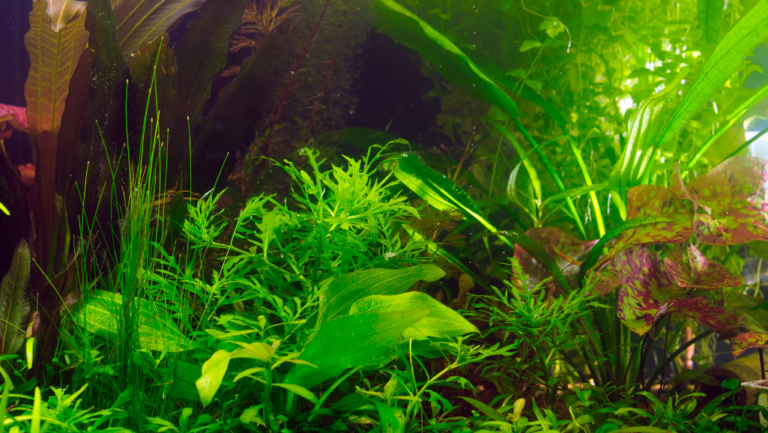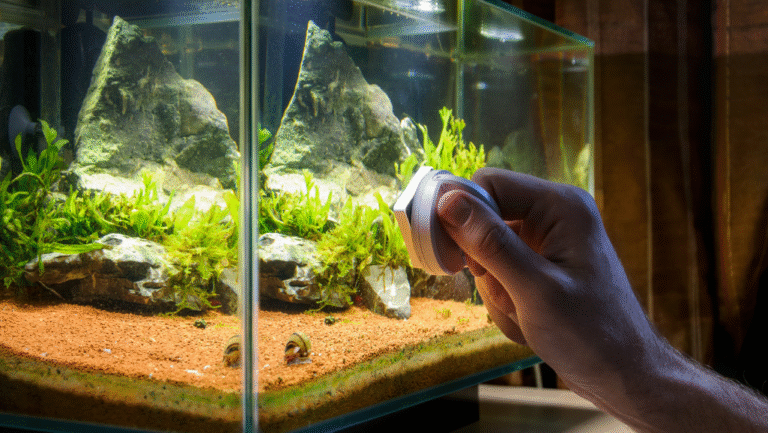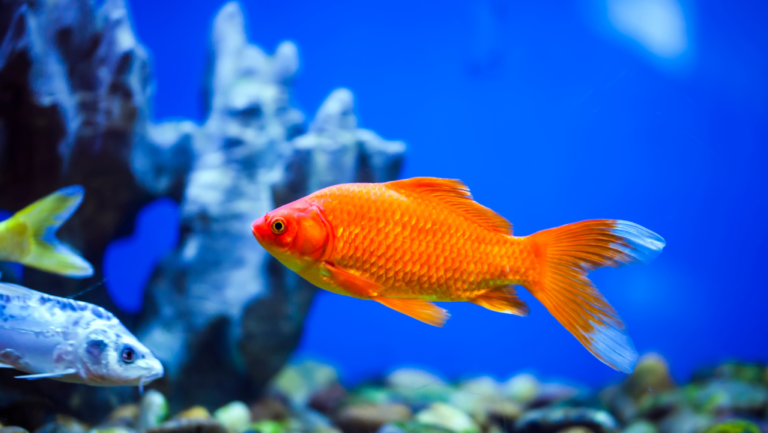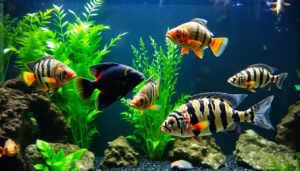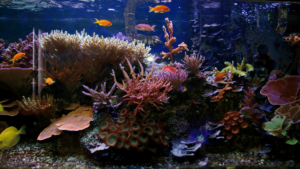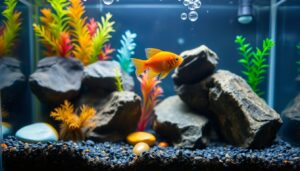Creating a vibrant and healthy aquatic environment starts with the right aquarium plant selections. These natural additions not only enhance the beauty of your tank but also play a crucial role in maintaining water quality and supporting fish health. From absorbing harmful toxins to providing oxygen, live plants are essential for a thriving underwater ecosystem.
Premium aquatic collections, like those from trusted sources, offer a variety of options to transform your tank. Whether you’re a beginner or an experienced aquarist, choosing high-quality plants ensures both functionality and aesthetic appeal. This guide will provide expert advice and insights to help you select the best plants for your setup.
By following this guide, you’ll learn how to create a balanced and visually stunning aquatic environment. Discover the benefits of incorporating live plants, from reducing algae growth to creating natural hiding spots for fish. Let’s dive into the world of premium aquatic plants and elevate your tank to the next level.
Key Takeaways
- Live plants improve water quality and support fish health.
- Premium aquatic collections offer diverse and high-quality options.
- Proper plant selection enhances both beauty and functionality.
- Live plants reduce algae growth and provide natural habitats.
- Expert tips ensure a thriving and balanced aquatic environment.
Introduction to Live Aquarium Plants
Natural greenery can transform your underwater space into a thriving ecosystem. These additions are more than just decorative—they play a vital role in maintaining balance and health in your tank. By absorbing toxins and producing oxygen, they create a sustainable environment for aquatic life.
The Role of Plants in Aquatic Ecosystems
Greenery in your tank helps regulate water quality by absorbing harmful substances like ammonia and nitrates. This process not only keeps the water clean but also reduces the risk of algae overgrowth. Additionally, plants provide natural hiding spots and breeding grounds for fish, enhancing their well-being.
Studies show that tanks with natural greenery can reduce ammonia levels by up to 50% within the first week. This makes them an essential component for any aquatic setup. For beginners, understanding this ecological role is the first step toward creating a healthy tank.
Why Choose Live Over Artificial Decor
While artificial decor can add visual appeal, it lacks the functional benefits of natural greenery. Live plants improve water quality, support fish health, and contribute to a balanced ecosystem. They also adapt to the tank’s environment, creating a more dynamic and natural look.
For example, plants like Java Moss and Amazon Swords are beginner-friendly and require minimal care. They not only enhance the tank’s aesthetics but also provide practical benefits. If you’re new to aquatic setups, this guide offers valuable insights to get started.
In the next sections, we’ll explore how to select and care for the right plants to ensure your tank thrives. From lighting to substrate, every detail matters in creating a vibrant aquatic environment.
Benefits of Incorporating Live Aquarium Plants
Adding greenery to your underwater setup offers more than just beauty—it’s a game-changer for your tank’s health. These natural additions improve water quality, reduce waste, and create a balanced ecosystem. They also enhance the visual appeal of your space, making it more vibrant and dynamic.
One of the most significant benefits is oxygenation. Through photosynthesis, greenery releases oxygen into the water, ensuring your aquatic life thrives. This process also helps absorb harmful toxins like ammonia and nitrates, keeping the environment clean and safe.
Beyond water quality, natural greenery provides shelter and reduces stress for fish. It mimics their natural habitat, encouraging healthier behavior and increased activity. This creates a more engaging and harmonious environment for all inhabitants.
Experts recommend incorporating greenery to outcompete algae for nutrients, reducing its growth. This not only saves time on maintenance but also ensures a cleaner and more attractive tank. With the right care, these additions can transform your setup into a thriving ecosystem.
As you explore the benefits, you’ll see how greenery enhances both functionality and aesthetics. In the next sections, we’ll dive deeper into selecting the right species and maintaining their growth for long-term success.
Choosing the Right Species for Your Tank
Selecting the perfect greenery for your underwater setup can make all the difference in creating a balanced ecosystem. The right selection ensures your tank thrives, both visually and functionally. To achieve this, you’ll need to assess your environment and understand the specific needs of each species.
Assessing Your Aquarium Environment
Start by evaluating your tank’s size and setup. Smaller tanks, like those under 16 gallons, require compact species such as Anubias “Petite” or Java Moss. For medium-sized tanks (20-50 gallons), consider midground options like Crypt wendtii or Dwarf Sag. Larger setups (55+ gallons) can accommodate background species like Italian Val or Jungle Val.
Substrate and natural light also play a crucial role. Rooted species, such as Amazon Sword, need nutrient-rich substrates, while Java Fern can thrive when attached to driftwood or rocks. Ensure your tank’s conditions match the needs of your chosen greenery for optimal growth.
Lighting, Water, and Nutrient Needs
Lighting is a critical factor in plant health. Low-light species, like Anubias nana, require 20-30 PAR, while high-light species, such as Teardrop Rotala, need more intense setups. Invest in quality lighting to support photosynthesis and prevent algae overgrowth.
Water quality is equally important. Regular testing ensures proper pH, hardness, and nutrient levels. Use root tablets or liquid fertilizers, like Aqueon Plant Food, to provide essential nutrients. Proper filtration also helps maintain a clean environment, promoting healthy growth.
By carefully considering these factors, you can make the best selection for your tank. This ensures your greenery thrives, creating a vibrant and balanced underwater ecosystem.
Exploring Popular Live Aquarium Plants
Elevate your tank’s ecosystem with these standout plant choices. Whether you’re a beginner or an experienced aquarist, selecting the right species can make a significant difference. This section dives into two popular options: Anubias and Java Moss. These plants are not only visually appealing but also functional, making them ideal for any setup.
Anubias and Anubias Nana: Care and Selection
Anubias is a favorite among aquarists for its hardy nature and low maintenance. Its variant, Anubias Nana, is particularly popular due to its compact size and adaptability. This species thrives in low to moderate light and can be attached to driftwood or rocks, making it versatile for various designs.
When selecting Anubias Nana, look for healthy, dark green leaves and strong rhizomes. Avoid plants with yellowing or damaged foliage. For optimal growth, ensure your tank has a stable environment with proper water parameters. Regular trimming helps maintain its shape and prevents overgrowth.
Java Moss and Its Versatile Uses
Java Moss is another excellent choice for aquarists. Its versatility makes it a staple in aquascaping. This plant can be used as a carpet, attached to hardscape, or left floating. It provides natural hiding spots for fish and shrimp, enhancing their well-being.
Java Moss requires minimal care, thriving in low light and a wide range of water conditions. Regular trimming keeps it tidy and prevents it from overtaking the tank. Its ability to absorb excess nutrients also helps reduce algae growth, making it a practical addition to any setup.
Combining Anubias Nana and Java Moss can create a balanced and visually stunning environment. These species complement each other, offering both aesthetic appeal and functional benefits. For more tips on selecting high-quality plants, visit our freshwater aquarium store.
Deep Dive: Anubias in Your Aquarium
Anubias is a standout choice for aquarists seeking a resilient and low-maintenance addition to their tank. Known for its durability and adaptability, this aquarium plant thrives in various conditions, making it ideal for both beginners and experts. Its slow growth rate and minimal care requirements make it a favorite among hobbyists.
Maintenance and Growth Tips for Anubias
Anubias plants are hardy and can grow in low to moderate light levels. They require only 0.5-2 watts per gallon, making them perfect for setups with limited lighting. Keep the light duration to 8-10 hours daily to prevent algae growth and ensure healthy development.
Water temperature should stay between 72°F and 82°F (22°C to 28°C) for optimal growth. Maintain a pH range of 6.0 to 7.5 and water hardness levels of 3 to 8 dKH. These conditions mimic their natural habitat, promoting strong and vibrant foliage.
Regular trimming is essential to keep Anubias looking its best. Use sharp scissors to remove yellowing or damaged leaves. Propagation is simple—cut the rhizome into sections, ensuring each piece has at least 3-4 leaves. This method encourages new growth and expands your collection.
For nutrient balance, consider using root tablets or liquid fertilizers every 4-6 weeks. This ensures the plant receives essential minerals for sustained health. Pairing Anubias with compatible tank mates, like community fish, enhances its versatility and appeal.
Anubias is a versatile and resilient plant that can elevate any tank. Its low maintenance and adaptability make it a must-have for aquarists. For more insights on low light aquarium plants, explore our detailed guide.
Maximizing the Potential of Java Moss
Java Moss stands out as a versatile and low-maintenance choice for enhancing your underwater environment. Its adaptability and ease of care make it a favorite among aquarists, from beginners to experts. This plant thrives in a wide range of conditions, making it ideal for various setups.
One of the unique features of Java Moss is its ability to grow on almost any surface. Whether attached to rocks, driftwood, or left floating, it adds a natural touch to your tank. Its dense, bushy texture provides excellent shelter for small fish and shrimp, improving their survival rates.
For propagation, simply trim a small section and place it in a new location. Java Moss can grow from even the tiniest shred, making it incredibly resilient. This self-sustaining nature eliminates the need for complex care routines.
When it comes to lighting, Java Moss thrives in low to moderate conditions. It doesn’t require CO2 injections or high-intensity setups, making it budget-friendly. Regular trimming keeps it tidy and prevents overgrowth, ensuring it remains an attractive addition to your aquarium.
“Java Moss transformed my tank into a thriving ecosystem. It’s easy to care for and provides a natural habitat for my fish.” – Dustin’s Fishtanks
By incorporating Java Moss, you not only enhance the aesthetics of your setup but also create a healthier environment for aquatic life. Its ability to absorb excess nutrients helps reduce algae growth, making it a practical and beautiful choice.
How to Incorporate Water Vegetation in Your Tank
Transforming your tank into a natural underwater landscape begins with thoughtful design and strategic plant placement. A well-planned aquascape not only enhances the visual appeal but also creates a balanced ecosystem for aquatic life. By mimicking natural habitats, you can achieve a stunning and functional underwater environment.
Designing a Natural Aquascape
Start by selecting a variety of species to create depth and texture. Use taller plants like sword varieties in the background and shorter ones in the foreground. This layering technique adds dimension and makes the space feel larger. Arrange plants to balance light and shadow, ensuring each receives adequate illumination.
Consider the substrate depth—2-3 inches is ideal for rooted species. Use driftwood or rocks to anchor plants like Java Moss, which don’t require substrate. This approach adds natural hardscape elements and enhances the overall design.
Integrating Sword Plants and Dwarf Baby Tears
Sword plants are perfect for midground or background placement due to their height. Their broad leaves provide shelter for fish and create a lush, green backdrop. Pair them with Dwarf Baby Tears in the foreground for a striking contrast. These tiny, carpeting plants add a vibrant, green carpet effect.
For optimal growth, ensure proper lighting and nutrient levels. Use root tabs for heavy feeders like sword plants and liquid fertilizers for Dwarf Baby Tears. Regular trimming keeps the aquascape tidy and prevents overgrowth.
By thoughtfully integrating these species, you can create a visually stunning and ecologically balanced tank. For inspiration, explore premium aquatic plant collections that offer diverse and high-quality options.
Proper Care Techniques for Aquarium Plants
Maintaining a thriving underwater environment requires proper care techniques for your greenery. By focusing on water quality, lighting, and nutrients, you can ensure your tank remains healthy and vibrant. Let’s explore the essential steps to keep your aquatic ecosystem in top shape.
Water Quality, Fertilizers, and CO2
Water quality is the foundation of a healthy aquarium. Aim for a pH level between 6.5 and 7.8, with general hardness between 50-100 ppm. Regular water changes—10% weekly—help maintain these levels and remove excess nitrates and phosphates.
Fertilizers are crucial for providing essential nutrients like nitrogen, phosphorus, and potassium. Use liquid fertilizers or root tabs weekly to support growth. For advanced setups, consider CO2 injection to enhance plant size and color. Pressurized systems synchronized with lighting are the most effective.
Managing Light and Temperature
Lighting plays a vital role in photosynthesis. Provide 10-12 hours of light daily using High Output T5 or LED fixtures. Replace bulbs every 12 months to ensure optimal performance. Avoid excessive light, as it can lead to algae growth.
Temperature also impacts plant health. Most species thrive between 74°F and 80°F. Use a reliable heater to maintain this range, especially in colder climates. Consistent conditions promote steady growth and prevent stress.
“Proper care techniques transform your tank into a lush, thriving ecosystem. Attention to detail makes all the difference.” – Dustin’s Fishtanks
By following these care techniques, you can create a balanced and beautiful underwater environment. Regular monitoring and adjustments ensure your greenery remains healthy and vibrant.
Styling Your Aquarium with Live Accessories
The art of aquascaping lies in blending greenery and hardscape for a stunning visual effect. By thoughtfully arranging natural elements, you can create a balanced and visually appealing underwater environment. This section explores creative approaches to styling your aquarium with live accessories.
Creative Arrangements for Visual Impact
Start by selecting a variety of species to add depth and texture to your setup. Use taller sword plants in the background and shorter species in the foreground. This layering technique creates dimension and makes the space feel larger. Arrange plants to balance light and shadow, ensuring each receives adequate illumination.
Incorporate natural accessories like driftwood and rocks to anchor greenery. For example, Java Moss can be attached to hardscape elements, adding a natural touch. This approach enhances the overall design and provides shelter for aquatic life.
Consider substrate depth—2-3 inches is ideal for rooted species. Nutrient-rich substrates support healthy growth, especially for heavy feeders like sword plants. Pair them with carpeting species like Dwarf Baby Tears for a striking contrast.
“A well-designed aquascape transforms your tank into a living work of art. Thoughtful arrangement of greenery and hardscape creates a harmonious underwater environment.” – Aquascaping Expert
By blending live accessories with natural decor, you can achieve a dynamic and visually stunning layout. These techniques not only enhance aesthetics but also create a healthier environment for aquatic life.
Maintenance Tips for a Healthy Planted Tank
Keeping your underwater environment healthy requires consistent care and attention. Regular maintenance ensures your tank remains balanced and vibrant, supporting both aquatic life and greenery.
Start with weekly water changes, replacing 10-25% of the water to remove excess waste and nutrients. This simple step helps maintain water quality and prevents algae growth. Use a gravel vacuum to clean the substrate and remove debris.
Trimming your plant regularly encourages healthy growth and prevents overgrowth. Remove dead or decaying leaves daily to avoid nutrient imbalances. For heavy feeders like sword plants, replenish root tabs every 4-6 weeks.
Monitor water conditions weekly, testing for pH, hardness, nitrate, and phosphate levels. Consistent monitoring helps you spot issues early and take corrective action. Use liquid fertilizers or CO2 injections to support plant health, especially in high-tech setups.
Seasonal adjustments are also important. In warmer months, increase water changes to compensate for higher evaporation rates. During colder periods, ensure your heater maintains a stable temperature between 74°F and 80°F.
Here’s a quick maintenance checklist to keep your aquarium thriving:
- Weekly water changes (10-25%)
- Daily removal of dead leaves
- Regular trimming and replanting
- Monthly filter cleaning
- Weekly water testing
If you notice algae outbreaks, reduce lighting duration and increase water changes. Adding algae-eating fish or snails, like Otocinclus or Nerite snails, can also help control growth. Consistent care routines are key to a healthy and beautiful tank.
Common Mistakes and How to Avoid Them
Avoiding common mistakes is key to maintaining a thriving underwater ecosystem. Many aquarists, especially beginners, face challenges that can disrupt the balance of their tank. By understanding these pitfalls, you can ensure your aquarium remains healthy and vibrant.
One frequent error is improper substrate selection. Using the wrong type can hinder root growth and nutrient absorption. For heavy root-feeders like sword plants, specialized substrates like Seachem Flourite™ are recommended. This ensures they receive the necessary nutrients for optimal growth.
Lighting is another critical factor. Too much light can lead to algae overgrowth, while insufficient light stunts plant development. Aim for 10-12 hours of moderate lighting daily, adjusting based on your tank’s needs. High-tech setups may require CO2 injection to support photosynthesis.
Over-fertilization is a common issue that can harm both plants and aquatic life. Start with a small amount of liquid fertilizer and adjust based on plant health. Yellowing leaves or holes may indicate nutrient deficiencies, while excessive algae suggests over-fertilization.
“Patience is crucial when setting up a new tank. Rushing the process often leads to avoidable mistakes.” – Aquascaping Expert
Overstocking is another mistake to avoid. Too many fish can overwhelm the tank’s filtration system, leading to harmful waste buildup. Stick to a balanced stocking level and perform regular water changes to maintain water quality.
For more detailed guidance, refer to our aquarium setup guide. It provides step-by-step instructions to help you create a thriving aquatic environment.
By learning from these common errors, you can ensure your tank remains healthy and visually stunning. Consistent care and attention are the keys to long-term success.
Innovative Collections and Aquarium Plant Packages
Discover the latest innovations in aquatic plant collections that elevate your tank’s design. From curated packages to cutting-edge Vitro Culture options, these offerings are designed to enhance both functionality and aesthetics. Whether you’re a beginner or an experienced aquarist, these collections provide everything you need to create a thriving underwater environment.
Exploring Vitro Culture Options
Vitro Culture plants, like Eleocharis sp. Mini and Micranthemum Monte Carlo, are grown in sterile lab conditions. This ensures they are free from pests and algae, making them a safe and reliable choice for your aquarium. These plants are also compact and easy to propagate, making them ideal for both small and large setups.
Vitro Culture options are perfect for aquarists seeking high-quality, disease-free plants. Their unique packaging ensures they arrive in pristine condition, ready to thrive in your tank. With minimal care requirements, these plants are a practical addition to any aquatic environment.
Featured Collections from Trusted Sources
Trusted suppliers offer curated collections that cater to various tank sizes and styles. These packages often include a mix of foreground, midground, and background plants, providing a balanced and cohesive look. Special offers like “Buy 2 Get 1 Free” make these collections even more appealing.
For example, a popular collection might include Anubias Nana, Java Moss, and Amazon Sword. These plants are carefully selected to complement each other, creating a harmonious underwater landscape. Detailed descriptions of each collection help buyers make informed decisions.
“Investing in high-quality plant collections ensures your tank remains healthy and visually stunning.” – Aquascaping Expert
By purchasing from reputable sources, you can guarantee the quality and longevity of your aquarium plants. These collections are backed by expert guidance, ensuring you achieve the best results for your aquatic environment.
Expert Advice on Aquarium Setup and Plant Selection
Expert guidance can transform your tank into a thriving aquatic haven. Whether you’re starting fresh or upgrading your setup, professional tips ensure success. From selecting the right plant to balancing aesthetics and functionality, these insights are invaluable.
Begin with the basics: substrate and lighting. A nutrient-rich substrate, at least 2-3 inches deep, supports root growth. Pair this with 10-12 hours of moderate lighting daily to promote photosynthesis. Avoid excessive light to prevent algae overgrowth.
When choosing aquarium plants, consider their ecological role. Species like Java Moss and Anubias are beginner-friendly and enhance water quality. For advanced setups, CO2 injection and liquid fertilizers can boost growth and vibrancy.
“A well-planned tank combines beauty and functionality. Expert advice ensures every detail is optimized for success.” – Aquascaping Pro
Modern technology, like automated CO2 systems and smart lighting, simplifies maintenance. These tools help maintain consistent conditions, ensuring your aquarium thrives. Regular monitoring of water parameters like pH and hardness is also essential.
For additional resources, consult trusted guides or seek expert consultations. These steps ensure your setup remains healthy and visually stunning. With the right strategies, your tank can become a balanced and vibrant ecosystem.
Integrating Live Aquarium Plants with Fish and Aquatic Life
A harmonious underwater environment thrives when fish and greenery coexist in balance. This synergy creates a self-sustaining ecosystem where both elements benefit from each other. By carefully integrating greenery, you can enhance water quality, provide shelter, and ensure a stable habitat for aquatic life.
Balancing Tank Ecosystems Effectively
Greenery plays a vital role in maintaining water quality. It absorbs harmful substances like ammonia and nitrates, keeping the environment clean. Additionally, it produces oxygen through photosynthesis, which is essential for fish health. This natural filtration system reduces the need for frequent water changes.
Fish, in turn, benefit from the shelter and security provided by greenery. It mimics their natural habitat, reducing stress and encouraging natural behaviors. For example, species like tetras and guppies thrive in densely planted tanks, where they can hide and explore.
Here are some practical tips for integrating greenery effectively:
- Layer plants: Use taller species in the background and shorter ones in the foreground to create depth.
- Choose compatible species: Select greenery that matches your fish’s needs and your tank’s conditions.
- Monitor water parameters: Regularly test pH, hardness, and nutrient levels to ensure a balanced environment.
By following these steps, you can create a thriving ecosystem where fish and greenery coexist harmoniously. This balance not only enhances the beauty of your tank but also ensures the health and well-being of its inhabitants.
Care and Troubleshooting for Live Aquarium Plants
Ensuring your aquatic environment remains healthy requires proactive care and troubleshooting. From algae overgrowth to nutrient deficiencies, understanding common issues is the first step toward maintaining a thriving setup. This section provides practical solutions and expert tips to keep your aquarium plants vibrant year-round.
Identifying and Resolving Common Issues
Algae overgrowth is a frequent challenge in planted tanks. It often results from excess nutrients or prolonged light exposure. To combat this, reduce lighting to 6-8 hours daily and perform weekly water changes. Adding algae-eating species like Nerite snails can also help.
Nutrient deficiencies, such as yellowing leaves or stunted growth, indicate a lack of essential elements. Use liquid fertilizers or root tabs to replenish nitrogen, phosphorus, and potassium. Regular testing ensures optimal nutrient levels for your plants.
Seasonal Adjustments and Ongoing Care
Seasonal changes impact your tank’s environment. In warmer months, increase water changes to manage higher evaporation rates. During colder periods, ensure your heater maintains a stable temperature between 74°F and 80°F.
Lighting adjustments are also crucial. Replace bulbs every 12 months to maintain intensity. For advanced setups, consider CO2 injection to enhance growth and vibrancy. Consistent care routines, like trimming and replanting, ensure long-term success.
“Proactive care and seasonal adjustments are the keys to a thriving aquatic environment. Regular monitoring ensures your plants and fish remain healthy.” – Aquascaping Expert
By addressing common issues and adapting to seasonal changes, you can create a balanced and beautiful underwater ecosystem. These strategies not only enhance aesthetics but also ensure the well-being of your aquatic life.
Enhancing Your Aquarium with Live Plants: Final Tips
Achieving a thriving underwater ecosystem requires a blend of knowledge, care, and adaptability. By following these final tips, you can ensure your tank remains healthy and vibrant for years to come.
Long-term Strategies for a Thriving Tank
Consistency is key to maintaining a balanced environment. Regular water changes, typically 10-20% weekly, help manage nutrient levels and prevent algae buildup. Pair this with a nutrient-rich substrate and proper lighting to support plant growth.
Periodic evaluations are essential. Check water parameters like pH and hardness monthly to ensure stability. Rotate plants as needed to maintain diversity and prevent overgrowth. This approach keeps your aquarium dynamic and healthy.
Here are some actionable steps for long-term success:
- Monitor lighting: Provide 8-10 hours of light daily to optimize photosynthesis.
- Use fertilizers: Liquid fertilizers or root tabs replenish essential nutrients.
- Prune regularly: Trim dead or decaying leaves to encourage new growth.
Proactive maintenance is crucial. Address issues like algae or nutrient deficiencies early to prevent larger problems. For example, reducing light duration or adding algae-eating species can help control overgrowth.
“A well-maintained tank is a testament to patience and dedication. Regular care ensures a thriving aquatic environment.” – Aquascaping Expert
Continual learning and adaptation are vital. Stay informed about new techniques and tools to enhance your setup. By embracing these strategies, you can create a sustainable and visually stunning underwater ecosystem.
Conclusion
Transforming your underwater space into a thriving ecosystem is both rewarding and achievable with the right approach. By incorporating natural elements, you can create a balanced environment that supports aquatic life and enhances visual appeal. This guide has highlighted the importance of selecting the right species, maintaining water quality, and ensuring proper lighting and nutrients.
Following expert advice ensures your setup remains healthy and vibrant. Regular care, such as trimming and water changes, keeps your tank in top condition. A well-maintained environment not only reduces algae but also provides a natural habitat for fish and other inhabitants.
For continued inspiration, explore additional resources and curated collections. Whether you’re a beginner or an experienced aquarist, these tools can help you achieve a stunning and sustainable underwater world. Start your journey today and enjoy the benefits of a thriving aquatic ecosystem.
